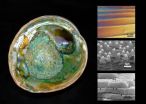(Press-News.org) DAKAR, SENEGAL (15 February 2013)—Scientists at the Nairobi-based World Agroforestry Centre (ICRAF) and partners have developed specialized graphs that map out fire behavior, known as nomographs, for landscape managers in Africa's savannas. The study, published in the February issue of the Journal of Arid Environments, pinpoints the optimal conditions for setting early-season prescribed fires—a process that when executed and timed properly, reduces the risk and impact of late dry season bushfires in increasingly fragile ecosystems, both of which are exacerbated by climate change.
Researchers say the findings signify an important step for Africa's Sudanian and Sahelian savannas, which have historically relied on less accurate methods to time early-dry-season controlled fires. The study finds it is necessary to use tools that consider both fuel characteristics and weather conditions, when planning these prescribed fires.
Fire has been battled by land managers for decades, but that doesn't make it a foe. In seasonally-dry savanna ecosystems – which dominate nearly half of Africa's surface area – naturally-occurring wildfires are critical to maintaining biodiversity and ecosystem function.
"The key to fighting fire with fire is robust science," said Cheikh Mbow, senior climate change scientist with the World Agroforestry Centre. "In the past, forest managers did not have the tools and methods needed to define what to burn, when to burn it, and to what extent. Our research is helping transform an age-old practice into a modern-day tool for managing fires and ecosystems in West Africa. This is a simple statistical tool that can be replicated most anywhere."
The scientists selected three areas representative of Senegalese savanna ecosystems, ranging from the open savanna of the Sahel to the more treed south-Sudanian savanna. They worked with Senegal's Forestry Service to torch 231 prescribed 10-by-10 meter plots (an area roughly the size of three football pitches) in Senegal at the end of the 2010 rainy season. They recorded data on air temperature, relative humidity, wind speeds, fuel load and cover, fuel moisture content and the amount of dry matter present.
Researchers found that the best time to ignite preemptive fires was when fuel moisture content – the amount of water a fuel holds, expressed as a percentage of its dry weight – was close to 120 percent and relative air humidity was between 12 and 79 percent. This was equivalent to between 12 days and one month after the last rain, depending on the site. They also found that the fires' rate of spread was greater when wind speeds were fast and fuel moisture content, relative humidity and fuel load were all low.
Their results showed that a fuel load of 94 grams per square meter is sufficient to support savanna fires in West Africa – less than half of what's required for savanna fires to propagate in South Africa. This is likely due to high grass cover and fast wind speeds.
"Fires have long been regarded as the enemies of the savanna, but since time immemorial, they have played a role in keeping these ecosystems functioning optimally, keeping the domination of some species over others in check," said Momadou Sow of the Environmental Sciences Institute of the Cheikh Anta Diop University in Dakar, Senegal. "Until now, we've lacked the accurate scientific knowledge to properly plan early season prescribed fires in West African savannas - our research is a step towards filling that gap."
Wildfires, like the hundreds that ravaged southeast Australia and Tasmania in early January, can cause widespread environmental devastation and destruction of property. Once the infernos gather strength, aided by wind and ample fuel supplies, they become uncontrollable and can travel large distances, destroying infrastructure, wreaking havoc on ecosystems, releasing millions of tonnes of greenhouse gases into the atmosphere and costing billions of dollars in damage.
Wildfires also threaten biodiversity, including many unique plants and animals found only on the continent. Many animals that dwell in trees, bushes, deadfall or underground perish from the blazes or succumb later from lack of food and shelter or increased predation. In Australia for instance, the koala is especially vulnerable to wildfires that consume the tree canopy, as the animals are slow-moving and do not use hollows, in which they could shelter.
"In Senegal, the lack of equipment and qualified human resources for firefighting make late-season fires an especially large threat. But the outcomes of this study – especially the ability to reliably predict fire rate of spread and fuel consumption – should allow better planning of fires based on desired characteristics in the future," said Mbow.
Fast-moving savanna fires generally remain on the surface, inflicting only minimal damage on trees, barely heating the soil below and leaving roots, nutrients and microorganisms unharmed. These frequent, low-intensity fires are what forest managers attempt to mimic in order to limit dangerous fuel build-up.
###
The World Agroforestry Centre, based in Nairobi, Kenya, is the world's leading research institution on the diverse role trees play in agricultural landscapes and rural livelihoods. As part of its work to bring tree-based solutions to bear on poverty and environmental problems, center researchers – working in close collaboration with national partners and farmers – have developed new technologies, tools and policy recommendations for increased food security and ecosystem health. For more information, visit www.worldagroforestry.org.
The study, Fuel and fire behaviour analysis for early-season prescribed fire planning in Sudanian and Sahelian savannas, by Momadou Sow, Christelle Hély, Cheikh Mbow and Bienvenu Sambou, is published in the February 2012 issue of the Journal of Arid Environments.
A genome-wide analysis searching for evidence of long-lived balancing selection—where the evolutionary process acts not to select the single best adaptation but to maintain genetic variation in a population—has uncovered at least six regions of the genome where humans and chimpanzees share the same combination of genetic variants.
The finding, to be published Feb. 14 in the journal Science, suggests that in these regions, human genetic variation dates back to a common ancestor with chimpanzees millions of years ago, before the species split. It also highlights the importance ...
The study supports the notion that smoking bans have public health benefits from early life.
It is well established that smoking during pregnancy impairs the growth of an unborn child and shortens gestation. Exposure to second-hand smoke has also been found to affect birth outcomes, yet little is known about the impact of recent smoke-free legislation on birth weight and preterm birth.
So a team of researchers, lead by Dr Tim Nawrot from Hasselt University, investigated whether recent smoking bans in Belgium were followed by changes in preterm delivery. In Belgium, ...
The authors estimate nearly 40,000 extra admissions to hospital as a result of income inequality over the three year study period.
Income inequality is associated with a variety of adverse health outcomes, including higher infant mortality, reduced life expectancy, and poorer self-reported health. But little is known about the possible link between income inequality and outcome after admission to acute care hospitals.
So a team of US researchers examined the association between income inequality and risk of death and readmission within 30 days of discharge from hospital. ...
In a sweeping review of the field of bio-inspired engineering and biomimicry in the Feb. 15 issue of the journal Science, two engineers at the University of California, San Diego, identify three characteristics of biological materials that they believe engineers would do well to emulate in man-made materials: light weight, toughness and strength.
Joanna McKittrick and Marc Meyers, from the materials science program at the Jacobs School of Engineering at UC San Diego, examine the three characteristics in a wide range of materials, from spider silk, to lobster and abalone ...
In the year 1006 a new star was seen in the southern skies and widely recorded around the world. It was many times brighter than the planet Venus and may even have rivaled the brightness of the Moon. It was so bright at maximum that it cast shadows and it was visible during the day. More recently astronomers have identified the site of this supernova and named it SN 1006. They have also found a glowing and expanding ring of material in the southern constellation of Lupus (The Wolf) that constitutes the remains of the vast explosion.
It has long been suspected that such ...
NINETEEN PERCENT of the world's reptiles are estimated to be threatened with extinction, states a paper published today by the Zoological Society of London (ZSL) in conjunction with experts from the IUCN Species Survival Commission (SSC).
The study, printed in the journal of Biological Conservation, is the first of its kind summarising the global conservation status of reptiles. More than 200 world renowned experts assessed the extinction risk of 1,500 randomly selected reptiles from across the globe.
Out of the estimated 19% of reptiles threatened with extinction, ...
AUGUSTA, Ga. – When people lose hope that they will ever get another good night's sleep, they become at high risk for suicide, researchers report.
Insomnia and nightmares, which are often confused and may go hand-in-hand, are known risk factors for suicide but just how they contribute was unknown, said Dr. W. Vaughn McCall, Chair of the Medical College of Georgia Department of Psychiatry and Health Behavior at Georgia Regents University.
The new study reaffirms that link and adds the element of hopelessness about sleep that is independent of other types of hopelessness, ...
It will take place on February 15th at the UN headquarters in New York City. Secretary-General Ban Ki-moon plans to attend.
"With unabated greenhouse-gas emissions, humankind would venture into an uncertain future that is much hotter than ever before in its history – so from a scientist's perspective, climate change is a global risk multiplier," says Schellnhuber, director of PIK and chair of the Scientific Advisory Council on Global Change (WBGU) for the German government. Many millions of people could be affected by severe climate change impacts. They range from sea-level ...
Philadelphia, PA—Social groups in a population can lend important cues to law enforcement officials, consumer-based services and risk assessors. Social and geographical patterns that provide information about such communities or gangs have been a popular subject for mathematical modeling.
In a paper published last month in the SIAM Journal on Applied Mathematics, authors use police department records about individuals' social and geographical information to determine gang memberships.
Data on social interactions is particularly hard to come by, but in combination ...
New Haven, Conn. – A new study has linked exposure to two common perfluorinated chemicals (PFCs) with osteoarthritis. PFCs are used in more than 200 industrial processes and consumer products including certain stain- and water-resistant fabrics, grease-proof paper food containers, personal care products, and other items. Because of their persistence, PFCs have become ubiquitous contaminants of humans and wildlife. The study, published in Environmental Health Perspectives, is the first to look at the associations between perfluorooctanoic acid (PFOA) and perfluorooctanesulfonic ...


